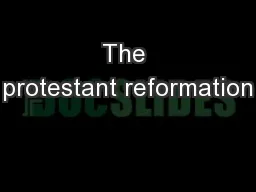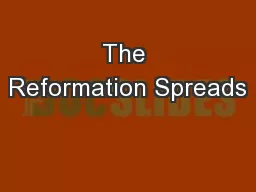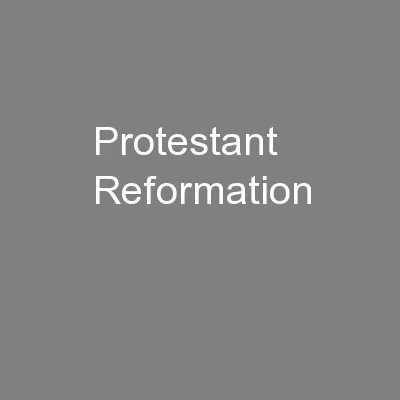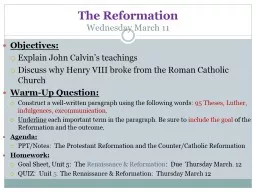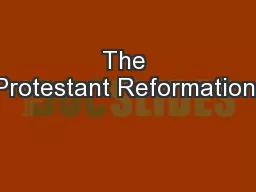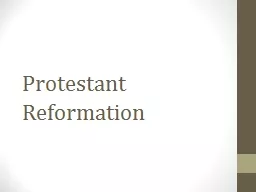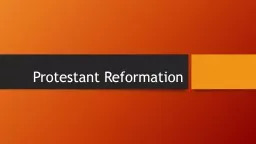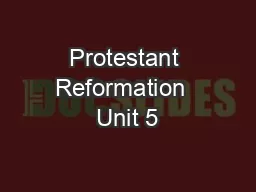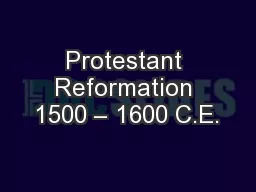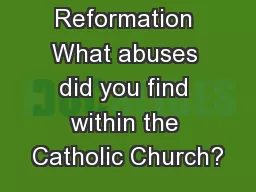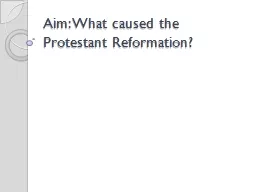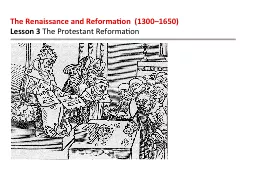PPT-The protestant reformation
Author : lindy-dunigan | Published Date : 2018-03-07
Learning Target 754 I can list and explain the significance of the causes for the internal turmoil within and eventual weakening of the Catholic Church including
Presentation Embed Code
Download Presentation
Download Presentation The PPT/PDF document "The protestant reformation" is the property of its rightful owner. Permission is granted to download and print the materials on this website for personal, non-commercial use only, and to display it on your personal computer provided you do not modify the materials and that you retain all copyright notices contained in the materials. By downloading content from our website, you accept the terms of this agreement.
The protestant reformation: Transcript
Download Rules Of Document
"The protestant reformation"The content belongs to its owner. You may download and print it for personal use, without modification, and keep all copyright notices. By downloading, you agree to these terms.
Related Documents

